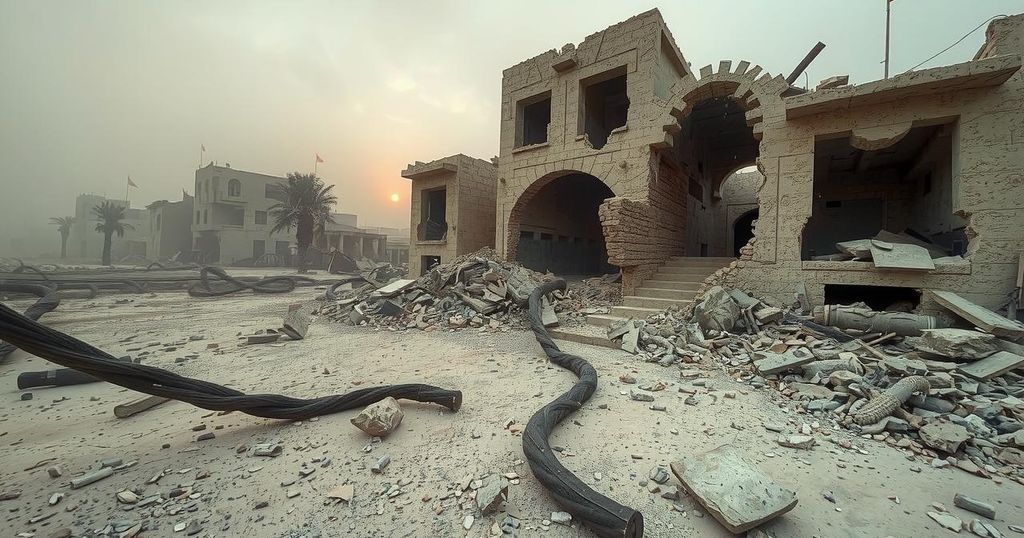A U.S. delegation will meet with Russian officials aiming for a ceasefire in the Black Sea and broader peace efforts for Ukraine. High-level discussions focus on preventing further escalation, safeguarding critical infrastructure, and verifying ceasefire terms, amid ongoing hostilities in the region.
A U.S. delegation aims to facilitate a ceasefire in the Black Sea and a wider cessation of hostilities in Ukraine during meetings with Russian officials this Monday. These discussions follow a meeting with Ukrainian diplomats the previous day and are part of U.S. President Donald Trump’s intensified efforts to halt the ongoing conflict. Recent dialogues included Trump communicating with both Ukrainian President Volodymyr Zelensky and Russian President Vladimir Putin.
Leading the U.S. delegation are Andrew Peek from the National Security Council and Michael Anton from the State Department. After engaging with Ukrainian representatives, they are set to meet with Russian officials. The White House emphasizes that the primary goal is to establish a maritime ceasefire, promoting unhindered shipping operations.
National security adviser Mike Waltz highlighted the discussions will extend beyond a Black Sea ceasefire to address “the line of control” between Ukraine and Russia, encompassing verification measures and peacekeeping strategies. Additionally, topics such as the return of Ukrainian children taken by Russian forces are on the agenda.
Russia’s delegation is headed by Grigory Karasin and Sergei Beseda. Meanwhile, Ukraine’s defence minister Rustem Umerov mentioned on social media that discussions have incorporated safeguarding energy facilities and critical infrastructure. Following Russian gains in early 2024, Trump shifted U.S. policy towards bilateral talks with Moscow and halted military aid to Ukraine, urging Kyiv to pursue peace.
U.S. special envoy Steve Witkoff attempted to dispel fears among NATO allies regarding Russia’s potential aggression in Europe, asserting, “I feel that he wants peace” in reference to Putin. Trump’s commitment to end the ongoing conflict is seen as a potential pivot from longstanding U.S. foreign policy focused on countering Russian expansionism in Europe.
Putin, whose forces commenced assaulting Ukraine in February 2022, has expressed conditional support for a ceasefire proposal from Washington but maintains an aggressive stance until specific terms are agreed upon. Government spokesperson Heorhii Tykhyi indicated the need for clarification regarding ceasefire modalities and monitoring measures from both the Ukrainian and U.S. perspectives.
On the other hand, while Putin agreed to Trump’s plan for a temporary halt of attacks on energy infrastructures, it did not expand to a comprehensive truce desired by the U.S. and Kyiv. Trump believes that efforts to manage the escalating tensions are “somewhat under control” and anticipates a broad ceasefire could be established by April 20. Nevertheless, both Russia and Ukraine continue to report hostilities, and Russian forces have been making incremental advances in contested eastern regions.
The U.S. delegation’s forthcoming discussions with Russia center on achieving a ceasefire in the Black Sea and broader peace talks regarding Ukraine. With various diplomatic efforts underway, including proposals for safeguarding critical infrastructures and verifying ceasefire terms, the U.S. aims to navigate complex negotiations amid an ongoing conflict that has claimed numerous lives. The possibility of a truce, although challenging, remains a focal point amid concerns of Russia’s continued military actions.
Original Source: www.theglobeandmail.com




